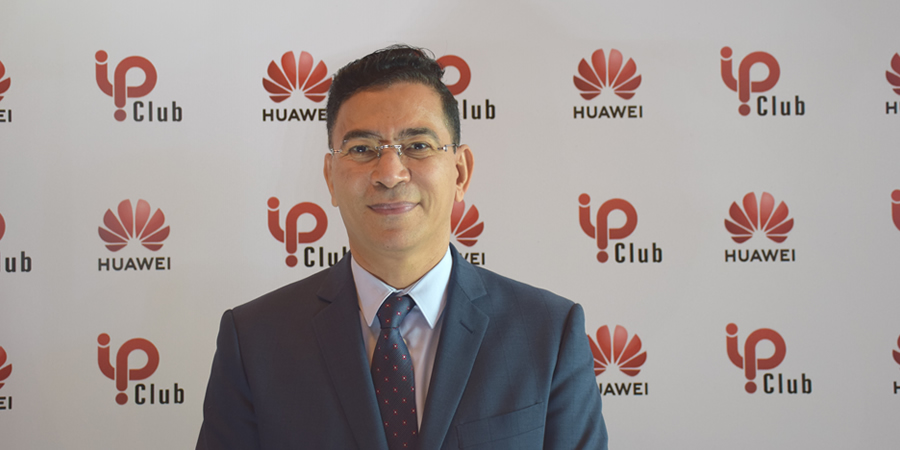In conversation with Telecom Review during the Huawei Middle East IP Club Carnival 2021, Alaa Elshimy, managing director and senior vice president, enterprise business group, Huawei Middle East shared some company insights with a focus on enterprise networking.
At Huawei, we were talking about the intelligent network, intelligent connectivity, and deterministic experience for customers with the demands of industry 4.0 vertical applications. Imagine busy airports and train stations, you cannot afford to have the networks down for a few seconds. The same goes with telemedicine, smart education, and people attending meetings. So the networking and applications are becoming deterministic based on experience. This is what intelligent connectivity will fulfill.
We are also talking about hyper-automation with machine learning, AI applications, virtual reality, augmented reality, and about the 338 million concurrent users of AR and VR today. All these applications of industry 4.0 will require gigabit everywhere. We are talking about 1 million connectivity in every square meter. Everything is getting connected be it appliances cars, watches, phones, computers, everything we do, and everything we have is connected to people.
In terms of 5G, WiFi6, and fifth-generation fixed networks, we provide intelligent connectivity for our customers. As the complexity level also increases with such applications to manage the operation of complex data centers and platforms, the imaster NCE is going to make a big transformation in the industry.
Please tell us about Huawei’s recent intelligent products and solutions and how enterprise customers can benefit from them.
The autonomous network is a key solution and we are demonstrating it. For the last two years, we have been talking about the intent-driven network (IDN) which will know the intent of the business people and translate it into network commands on their behalf. We are two years ahead of the competition in this field.
The enterprise market, customers and competitors are talking about the software-defined network which we also have been talking about it for a long time. Today, we're talking about the autonomous network that will manage and heal itself whenever there is a problem. The network will minimize the probability of any problems using big data and AI.
The second element is simulation. Today, making any changes in the network, such as adding new applications, can be a big challenge. But with the autonomous network and simulation using big data and AI, the errors can be rectified virtually before being implemented in the physical world. This is the digital twin concept that we are using in the autonomous network. In addition to the imaster NEC, we are leveraging our experience in 5G, Wi Fi6, and other wireless connectivity by offering the Cloud Campus 3.0, the new generation of the cloud campus which is a fully wireless campus connected at a very high speed and very low latency as we’re using 5G. In Cloud Campus 3.0, there is not only Wi Fi6 but also convergence between the wired and wireless network, including 5G branches, WAN connectivity and DCN connectivity.
Can you give us an example of collaboration with third parties to provide solutions across industry verticals?
Huawei is a technology company but we work very closely with the ecosystem to build different vertical solutions for different industries. In oil and gas, we work with Schlumberger, Halliburton, and others to build what's called the digital oilfield where everything will be connected into one IoT gateway, and then all the data are sent to the data center or control room in real-time to have full control and visibility of the oil field digitally with analytics to help in taking decisions with AI-driven predictive maintenance. This will facilitate full asset management of the entire field so you will have visibility on everything happening in the field.
The numbers of solutions are unlimited when it comes to smart airports, smart grid, and utilities, banking, etc. With the digital twin mixing the digital and physical world, it is going to create a lot of intelligent applications which will change our life.
What has been Huawei’s innovation in tackling the omnipresent threat of cybersecurity and enterprise networks?
Cybersecurity is very important and it is becoming even much more important with intelligence and automation. At Huawei, we have established the Transparency Center to show all our products, technologies, documentation, process, and governance of what we do. We invite customers and third party and governments to come and see and test the technologies and solutions. We integrate security into everything we do from the design phase until the product phase and we implement that in our company and our network.
For the last 30 years, we were able to secure our network and haven’t faced any cyber threats. The threats will always be there, but we need to continue to work in a proactive way to protect our data and our systems.
